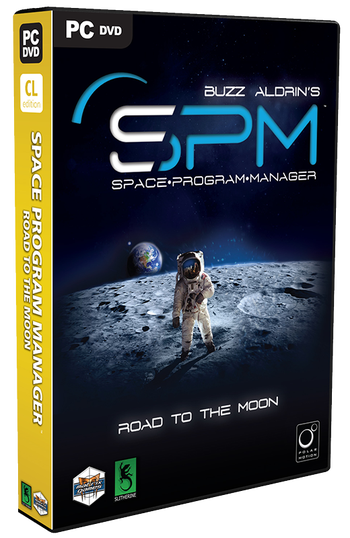Postmortem: Buzz Aldrin's Space Program Manager
In this post, I'm sharing the full version of "We Choose To Go To The Moon", a book we released earlier this year that provides a detailed account behind the development of the strategy game "Buzz Aldrin’s Space Program Manager".

In early 2007, while I was still a university student, I started working on the development of a computer game where the player assumed the role of Director of a fictional space agency at the dawn of the Space Age. The mission was to carefully manage the available resources in order to accomplish a manned mission to Mars. This pet project, under the working title of ‘Space Program Manager’, combined various interests I had at that time, such as space history and game development.
After undergoing various phases, in October 2014 we finally released “Buzz Aldrin’s Space Program Manager” (SPM). As you can see, the ‘I’ that started the project nearly eight years earlier turned in a ‘We’ and the title now featured the name of one of the Apollo 11 astronauts. Not only that, but the overall scope of the game changed as well: instead of managing a fictional space agency, players would now become Directors of either NASA or the Soviet Space Agency and their mission was to be the first to place a human being on the surface of the Moon (and bring it back safely to the Earth!). This change of scope was directly influenced by the initial feedback we got during the Early Access Program we launched in late 2013.

‘Buzz Aldrin's Space Program Manager’ box art.
The final version of the game was well received and, at the time of writing, it sports a healthy 80% of positive reviews on Steam. After moving on to a full-time job in the second half of 2015, I started working on a series of post-mortem articles during my spare time in order to both share my experiences and reflect on the whole experience. Since the articles themselves were becoming quite lengthy, I decided to turn them into a small book comprising four parts titled ‘We Choose To Go To The Moon’. I have already made the first three parts available during the last few months (you can find them here, here and here). In this blog entry, I’m making the whole text available online for free so that everyone can read and benefit from it.

In-game screen: the NASA space complex in its initial stages.
The book is roughly 100 pages long and provides a narrative of all the stages the project went through since it started as a personal project in 2007. Key highlights from those eight years include rebooting the project using a different game engine and programming language, partnering with an established strategy games publisher from the UK, launching an Early Access Program and meeting Buzz Aldrin in person in order to discuss the game!

In-game screen: The Mission Control Center displaying the progress of a lunar mission.
Since I wore many hats during the production of the game (Programmer, Project Manager, Game Designer and Community Manager) and was involved on it from start to finish, I had the opportunity to get exposure to a wide range of interesting problems and situations as varied as dealing with contractors, managing a distributed team comprised of members that didn’t share a common language and gracefully dealing with the feedback from our community after the Early Access Program started. Thus, in the last part of the book, I provide some thoughts on the main lessons I’ve learnt. This last part is not prescriptive by any means, but I’m confident you will find it helpful if you’re planning to embark on a project of a similar scope (we’re already applying these lessons to our new game "Space Station Inc.").
Please find the whole text of ‘We Choose to go to the Moon’ here, I hope you enjoy it!

‘We Choose to Go to The Moon’ cover art.
Read more about:
BlogsAbout the Author(s)
You May Also Like







.jpeg?width=700&auto=webp&quality=80&disable=upscale)








